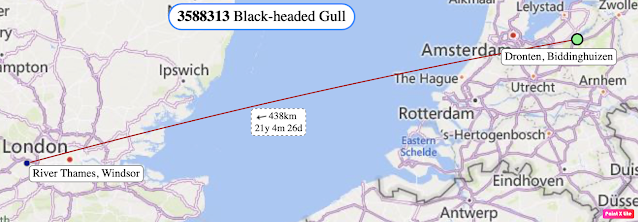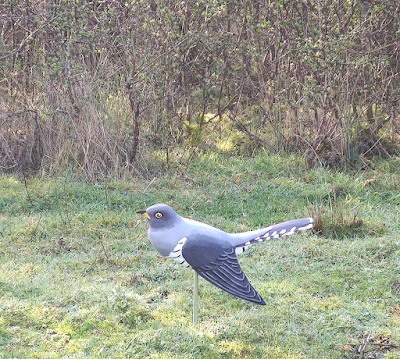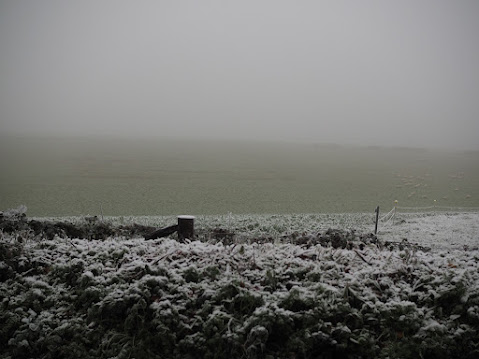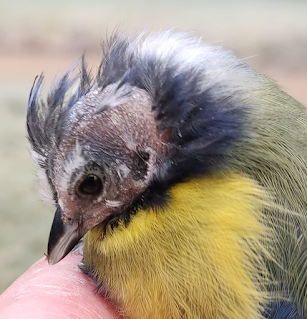The group got out to Bedfont and Minet, in addition to a couple of sessions at Wraysbury.
A mid-month visit took place at Bedfont. Summer migrants had gone and winter visitors had yet to arrive in number - that's just the way it sometimes goes. Blue Tits dominated the numbers and were joined by a good range of species including Blackbirds, Chiffchaffs, Goldcrest and a band of Long-tailed Tits.
A nine-year Jay turned up at Minet; hatched in 2014 and ringed in 2015, taking it well past the typical 4-years an average Jay can expect. The UK record for a Jay is 16 years 9 months, set in 1983. The same session had a female Sparrowhawk taking the sites ratio of female:male ratio to 5:7. Quite different to the group ratio for this species of 1:3.1. Both ratios reflect our use of passerine nets that female Sparrowhawks tend not to be caught in - their larger size making a net's mesh size behave like a blanket to them which they can roll out of.
The first session at Wraysbury, on the 8th, was good for October. The last of the Blackcaps numbered fifteen and we ringed twenty Meadow Pipit too. We caught one of two Grey Wagtails that had come down to our pipit triangle of nets (a right-angle triangle using 18m/9m/12m nets). The second visit on 22nd was quieter: the Blackcaps were gone, replaced by the first Redwings arrivals. A few pipits were ringed and a Green Woodpecker provided a trainee a new ringing experience.
Ring-sightings
at Datchet
at River Thames, Windsor
A Black-headed Gull ringed at the nest in 2002 in Ijsselmeerpolders, The Netherlands turned up at Windsor.
 |
| A series of photos patiently gets a full ring number |
A Greylag Goose seen in October turned out to have been ringed just 14km away in Southall in September.














%20(Medium).JPG)